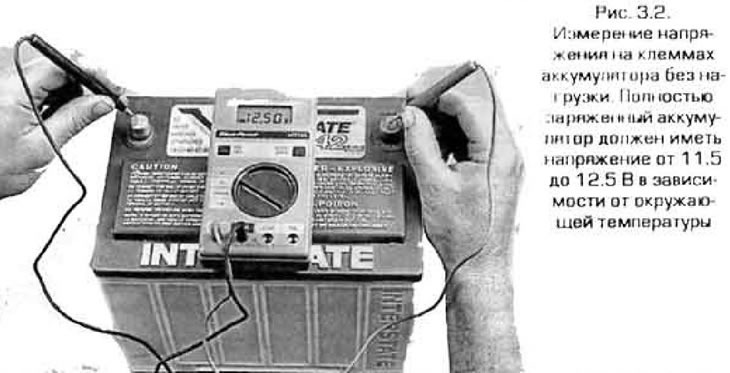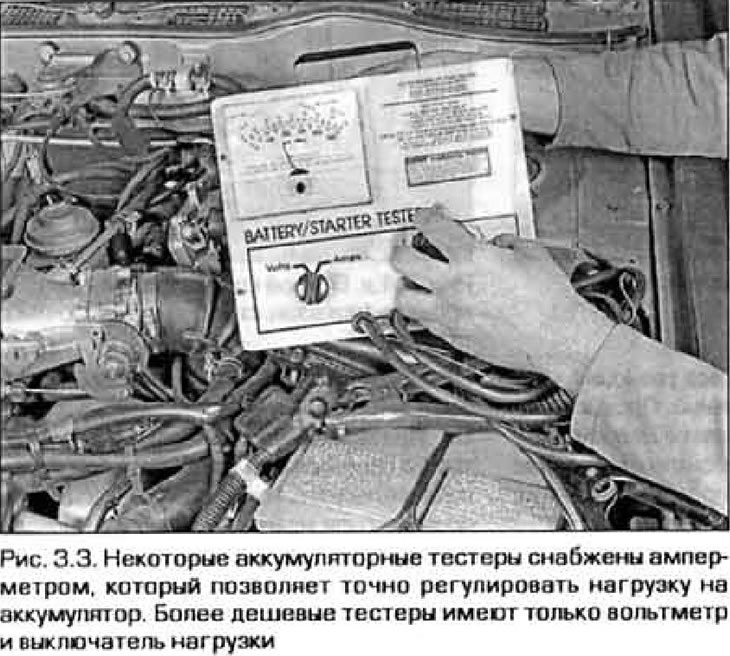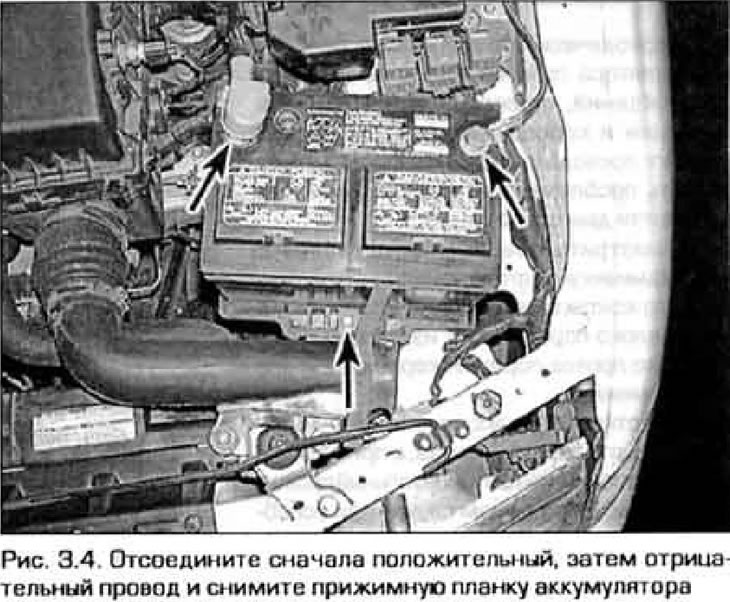Warning. If your car's audio system is equipped with an anti-theft protection, make sure you know the unlock code before disconnecting the battery.
Examination
1. Disconnect the negative, then the positive wire from the battery..
2. Check the battery charge level. On a maintenance-free battery, look at the color of the indicator on the top wall. If the indicator is black, charge the battery. Then measure the voltage at the battery terminals (fig 3.2).

Note. Before measuring the voltage, it is necessary to remove the surface charge of the battery. To do this, turn on the high beam headlights for ten seconds, then turn them off and wait a couple of minutes. Turn off all power consumers and measure the voltage at the battery terminals with a voltmeter or tester. The voltage should be in the range of 11.5-12.5 V or a little more. If the voltage is lower than specified, charge the battery before continuing with the battery load test. Do not test under load an insufficiently charged battery.
3. Perform a load test on the battery. This test can only be performed correctly using a special battery tester. This tester allows you to measure the voltage of the battery when the starter and other powerful consumers are turned on. Connect the tester to the battery terminals (pic. 3.3). Switch on the load according to the manufacturer's instructions. In addition to energy-intensive automotive units, the tester has a built-in graphite shunt, which allows you to load the battery with additional current. Turn on the load for no more than 15 seconds and check that. that the battery voltage does not drop below 9.6 V. If the battery is low or in poor condition, the tester will detect this immediately. Note. At low ambient temperatures, the voltage under load may be slightly less than specified. In the instructions attached to the tester, there is a table of temperature corrections. So, at a temperature of about 0°C, the minimum voltage should be approximately 9.1 V.

Replacement
4. Disconnect the battery first negative, then positive wire (pic. 3.4).

5. Remove the battery clamp.
6. Remove the battery from the tray. Be careful, it's heavy.
7. Inspect the tray under the battery for corrosion.
8. If there is corrosion on the tray, unscrew the bolts and remove the tray (fig 3.8). Clean the places touched by corrosion to bare metal and paint over these places with a primer.

9. When replacing the battery, make sure that the new battery has the same or better performance as the old one (those. rated voltage, polarity, capacitance, current in starter mode, etc.).
10. Install the battery in the reverse order of crushing.
